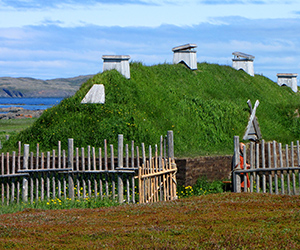CANADA HISTORY
Transitions

The 1891 Canadian general election and its aftermath marked a critical turning point in Canadian political history. It signaled the end of Sir John A. Macdonald's long and dominant presence in Canadian politics and set the stage for the rise of Wilfrid Laurier and the Liberal Party, bringing forth new challenges that would shape the future of the young nation. The political drama leading up to and following this election underscored the fragility of Canada's early political system, the importance of leadership, and the divisions within Canadian society that spanned language, religion, and regional identities.
The Context of the 1891 Election
By 1891, Macdonald had held power almost continuously since 1867, save for the brief Liberal interlude under Alexander Mackenzie in the 1870s. Macdonald’s vision, encapsulated in his National Policy, focused on economic protectionism, railway development, and westward expansion, had driven the nation forward through its formative years. Under his leadership, Canada had seen the completion of the Canadian Pacific Railway (CPR), the settlement of the west, and the solidification of its place within the British Empire.
However, as the 1891 election approached, Canada faced significant challenges. The Manitoba Schools Question—a constitutional and cultural crisis surrounding the rights of French-speaking Catholics in Manitoba—loomed large on the horizon, as did economic uncertainties. The Conservative Party, despite its successes, was losing ground in Ontario and Quebec, where dissatisfaction with government policies was growing.
On the other side, the Liberal Party had long been disorganized and ineffectively led under Edward Blake. Although Blake was a brilliant legal mind and respected politician, he lacked the unifying touch and charisma needed to galvanize a fragmented party. As a result, the Liberals were unable to capitalize on opportunities to challenge Macdonald’s Conservative government effectively. However, change came when Blake handpicked Wilfrid Laurier, a rising star from Quebec, to succeed him. Laurier’s fluency in both French and English, combined with his moderate political stance and charm, gave the Liberals a fighting chance in the upcoming election.
The 1891 Election: Macdonald's Last Battle
The 1891 election was fought against the backdrop of economic uncertainty, with the Conservatives still advocating for Macdonald's National Policy, which relied on high tariffs to protect Canadian industries from American competition. Macdonald framed the election as a choice between Canadian loyalty to Britain and potential annexation to the United States. His campaign slogan, “The Old Man, The Old Flag, The Old Policy,” resonated deeply with Canadians who had grown up with the narrative of Canada’s loyalty to the British Empire.
Macdonald, then 76 years old and in declining health, was still able to harness the appeal of Canadian nationalism, British loyalty, and the fear of American economic domination. He presented the Liberals as willing to entertain reciprocity with the U.S., a trade arrangement that Macdonald warned could lead to Canada's absorption into the United States. The fear of the “American monster to the south” struck a chord with many Canadians, particularly in Nova Scotia and New Brunswick, where loyalty to Britain ran deep.
The election was hard-fought. The Liberals made significant gains in Ontario and Quebec, where dissatisfaction with Conservative policies had been growing. However, Macdonald's deep-rooted support in the Maritimes and emerging backing from the newly settled West—where the CPR had fueled economic growth—enabled the Conservatives to hold onto power by a slim margin. Macdonald had secured his sixth election victory, but it was a bittersweet one. His health had deteriorated significantly, and three months after the election, Sir John A. Macdonald, the Father of Confederation, passed away, leaving a void in Canadian politics and his Conservative Party in disarray.
The Struggle to Replace Macdonald
Macdonald’s death threw the Conservative Party into a leadership crisis. The man who had dominated Canadian politics for decades was gone, and the party was left to pick up the pieces. In many ways, Macdonald had been the glue holding the diverse factions of the Conservative Party together, and without him, the party quickly began to fracture along regional and ideological lines.
Two senior Conservatives, Charles Tupper and John Thompson, were initially approached to succeed Macdonald, but both declined. The party eventually turned to Sir John Abbott, a respected Conservative senator and elder statesman. Abbott, however, only reluctantly accepted the position and served as prime minister for just over a year before resigning due to illness and exhaustion. His brief tenure was marked by economic difficulties, as Canada was beginning to feel the effects of a global recession, and by the simmering Manitoba Schools Question, a cultural and political issue that would come to dominate the next several years.
Abbott’s resignation paved the way for John Thompson, who finally agreed to take on the role of prime minister. Thompson, a Catholic from Nova Scotia, was an able politician and well-regarded within the party. However, his leadership was cut short when he died suddenly while visiting Queen Victoria in London in 1894, leaving the party once again scrambling to find a new leader.
The next Conservative leader, Mackenzie Bowell, was faced with the growing crisis of the Manitoba Schools Question. His handling of the issue, which pitted Protestant English Canada against Catholic French Canada, further divided the Conservative Party. Bowell lost the support of much of his cabinet and was forced to resign in 1896, just as the issue was coming to a head.
The Collapse of the Conservatives and Laurier's Rise
By the time Charles Tupper was finally persuaded to return from his diplomatic post in London to take the helm of the Conservative Party, it was too late to salvage the party’s fortunes. Tupper, a founding father of Confederation and a respected statesman, was a capable leader, but the party was deeply divided, and the Liberals, under Laurier, were ready to strike.
Laurier had spent the years since 1891 carefully building up Liberal support across Canada. His bilingualism and moderate stance on key issues allowed him to appeal to both French and English Canadians. Laurier's campaign in the West, where he promised to address the concerns of settlers and promote economic development, paid off handsomely in the 1896 election. The Conservatives, weakened by internal divisions and an inability to effectively address the Manitoba Schools Question, were defeated.
Laurier's victory in 1896 was a watershed moment in Canadian history. He became the first French-Canadian prime minister, marking the rise of a new political era in Canada. His success also symbolized the ability of the Liberal Party to unite disparate elements of Canadian society, particularly the French-speaking population of Quebec and the increasingly diverse immigrant population of the West.
The Aftermath: A New Era for Canada
The defeat of the Conservatives in 1896 marked the end of nearly 30 years of dominance by Sir John A. Macdonald and his party. It also signaled the rise of Wilfrid Laurier, who would go on to lead Canada for 15 years and oversee one of the most dynamic periods of growth and change in the country’s history.
Laurier’s leadership would bring a shift in the political landscape of Canada, with his vision of a united, bilingual, and prosperous nation that looked to the future while maintaining its ties to Britain. He would face his own challenges, including the continued fallout from the Manitoba Schools Question, the rise of new political movements in the West, and the push for greater autonomy from Britain, which would culminate in the Statute of Westminster in 1931.
For the Conservative Party, the years following Macdonald's death were a period of rebuilding and realignment. The party would not return to power until 1911 under Robert Borden, by which time the political landscape of Canada had changed dramatically.
Conclusion: The Importance of the 1891 Election and Its Aftermath
The 1891 election and the subsequent collapse of the Conservative Party marked a turning point in Canadian political history. Sir John A. Macdonald’s final victory, won on the strength of his appeal to loyalty to the British Empire and fear of American influence, was a testament to his enduring legacy as the architect of Confederation and the creator of modern Canada. However, his death soon after the election left the Conservative Party without its unifying leader, leading to a series of leadership crises that culminated in their defeat in 1896.
Wilfrid Laurier’s rise to power signaled the beginning of a new era for Canada, one in which the country would grapple with its bilingual and bicultural identity, expand its western frontier, and assert its autonomy on the world stage. The election of 1891 and its aftermath underscore the importance of leadership, the fragility of political coalitions, and the complex interplay of regional, linguistic, and religious identities in shaping Canada’s political landscape.
Cite Article : www.canadahistory.com/sections/documents




